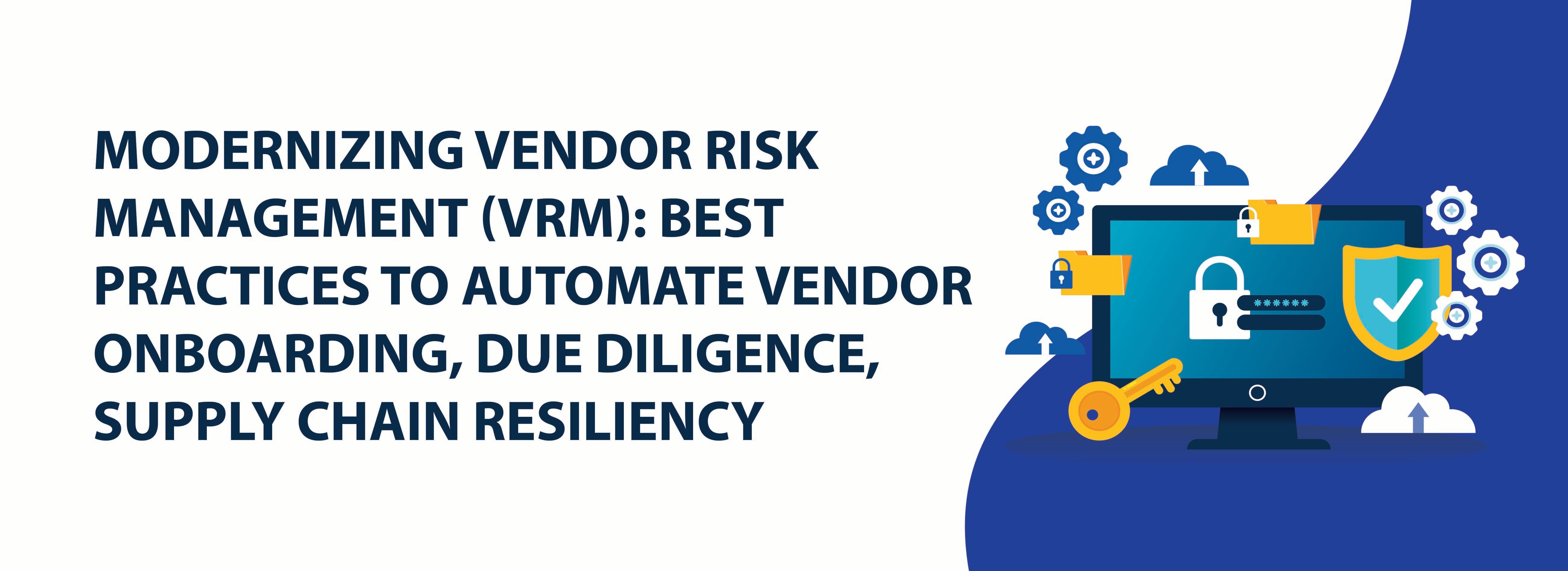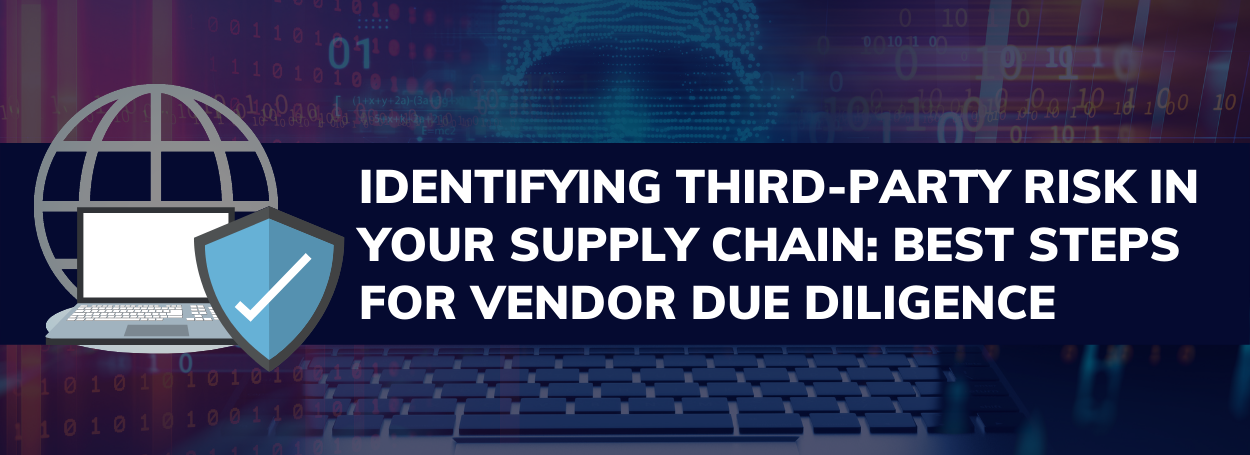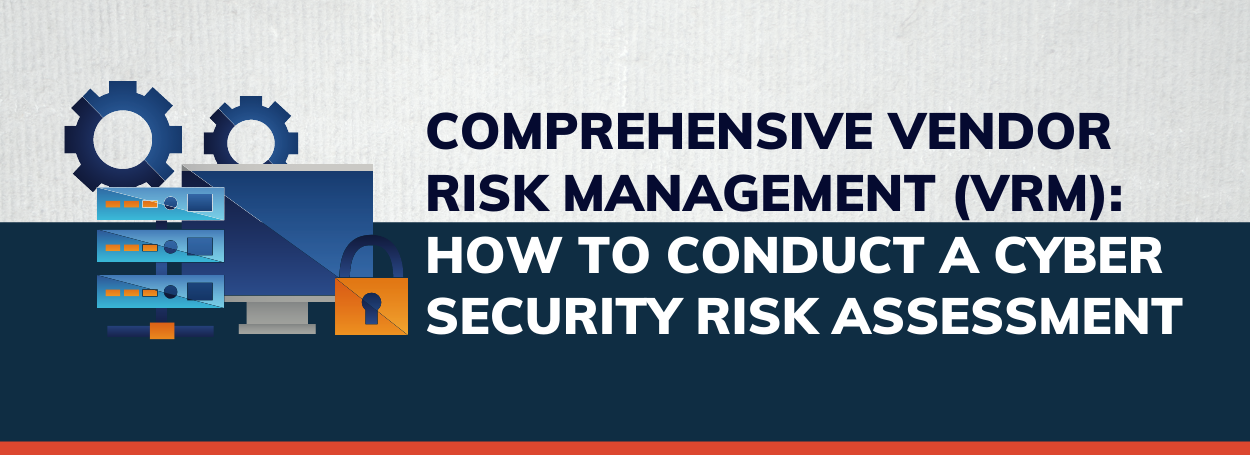The Convergence of Third-Party Risk and Cybersecurity: How to Align Risk Management Policies Throughout the Extended Enterprise

Over the last decade, we have observed that the third-party risk landscape is vast, evolving, and expanding. As a result, multinational corporations are overloaded by compliance pressure, particularly in terms of third-party risks.
New and sophisticated attack vectors expose your business to many different risks, including reputational, financial, operational, legal, and more. As such, cybersecurity has become the most crucial area of third-party risks. The convergence is so close and crucial that any strategic organization can no longer afford to ignore third-party cybersecurity risks.
How Third-Party Risks and Cybersecurity Converge?
Today, most organizations conduct business with dozens, hundreds, and even thousands of third-party vendors. These vendors help your business grow and remain competitive and profitable. But at the same time, they expose your enterprise to an array of cybersecurity risks.
Malicious actors are always on the lookout to intrude your networks and systems through your third-party vendors, with the intent to steal your data or hold your systems and data for ransom. Though it may sound daunting, your vendors undoubtedly provide the easiest route for cybercriminals to penetrate your organization.
For instance, consider the excessive reliance of businesses on big data, the Internet of Things, and emerging technologies. IoT is a vast and expanding network of interconnected devices, software, network connectors, and more, continuously transferring and processing data. And in case of a lack of security in these operations, a tiny vulnerability in one of the vendor’s networks or system could expose the entire ecosystem to a cyber attack. In this way, cybercriminals could easily dodge existing cyber defenses of the target organizations, making their way into their networks and systems.
Large organizations rely on interconnected endpoints, devices, networks, and platforms. And as their business and operations grow, they expand their interconnectivity past the traditional form of network. Expanding your network in such a manner can make your business more productive and spur growth, but it could also expose you to third-party cybersecurity risks.
Bad actors could target vendors that supply sensitive hardware and software to your business and those connected with your networks to provide any service or goods. There have been dozens of cases whereby cybercriminals have initiated their attacks through the loopholes in the equipment or software of a vendor.
Given this convergence of third-party risk and cybersecurity, how do you steer your business through the evolving threat landscape? Regardless of your business size, you must align risk management policies throughout the extended enterprise. Doing so can significantly reduce your third-party cybersecurity risks.
How to Align Risk Management Policies Throughout the Extended Enterprise?
With the growth and expansion of your company as an extended enterprise, it becomes imperative to proactively and strategically manage exposure to third-party risks. Effective alignment of your risk management policies through your organization can go a long way towards cutting down the dangers emanating from your supply chain ecosystem. It can also help identify, monitor, and mitigate risks continuously throughout your extended enterprise – including suppliers, partners, and even customers.
An adequately aligned risk management policy will help locate possible vendor security incidents based on past security events. You can then take quick actions to ward off and remediate the events and forecast the time it would require to do so.
But the problem is that vendor risk management in most extended enterprises is disintegrated and decentralized. As a result, and despite their risk management focus, many enterprises fail to align their policies or apply them evenly across all their different integration points. Based on third-party risk and cybersecurity convergence, businesses need to align risk management policies throughout the extended enterprise.
Here’re some tips to line up your extended enterprise risk management policies properly:
Strategy and Governance
An official strategy and governance model is the key to aligning your risk management policies. It starts with assessing your governance model for its agility and versatility to incorporate risk management practices and key factors that drive value.
Next, identify the critical moments and turning points in your vendor relationships and have an established method for continuous assessment of the risks through your extended enterprise. Also, close the gap between the top management and your third-party risk management team.
The People Factor
Effective alignment of vendor risk management policies requires vigorous relationship management, besides strict adherence to compliance regulations. Therefore, make sure to allocate dedicated responsibilities for vendor risk management throughout your extended enterprise. Also, remember that board-level ownership of your extended enterprise risk management is a critical aspect of improving your VRM program because it keeps the top management updated with emerging risks and compliance requirements.
Procedures and Protocols
Having predetermined policies for reacting to or preventing third-party vendor threats can help your organization smoothly traverse the evolving risk landscape without experiencing business downtime. Therefore, you must standardize and incorporate risk management policies, procedures, and protocols throughout the extended enterprise. This approach can guide the development of more effective and flexible strategies, in addition to cutting costs and achieving operational efficiency.
Advanced Technologies and Automating the VRM Process
Relying on legacy systems or manual vendor risk management protocols can no longer protect your extended enterprise from evolving and sophisticated risks. As such, you must consider using advanced technologies to cope with the risks and align your risk management policies.
For example, you could use reliable software to automate many repetitive functions of your vendor risk management (VRM) process. Doing so can help you make quick and informed decisions, besides getting control over your vendor risk management throughout the extended enterprise.
Technology can also help you manage new vendor selection and onboarding, automate risk assessments and audits, streamline third-party responses, access information in real-time for timely decision making, and more.
Vendor360 - A Modern and Versatile Third-Party Risk Management Platform
Vendor360 is a next-generation third-party risk management software that can provide you with a 360-degree view of the vendor risks from across your extended enterprise. Using this platform, you can ensure alignment of and adherence to your vendor risk management policies and standards.
Our single, centralized vendor directory provides your enterprise with unparalleled benefits. From managing vendor onboarding to automating risk monitoring and assessment and remediating risks to making better decisions with the help of deep insights and analytics, Vendor360 has your back!
Learn more about CENTRL’s Vendor360 platform or schedule a one-on-one LIVE DEMO.


